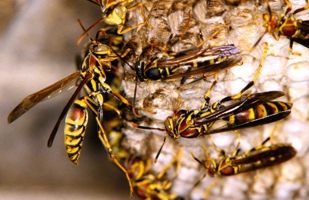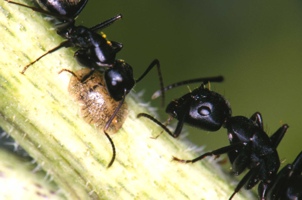|
Order Hymenoptera |
 |
 |
Honey Bees |
 |
 |
Bumble Bees |
|
Wasps Here we use the term wasp in the general sense. There are a number of different families that carry the common name wasp, including vespidae (yellow jackets, hornets, paper wasps), pompilidae (spider wasps), and sphecidae. Wasps are recognized by their distinctive body shape (constriction between abdomen and thorax) and warning colorations. They typically have well-developed wings, antennae, and chewing mouthparts. |
 |
 |
 |
 |
 |
 |
 |
Ants | |
 |
 |
 |